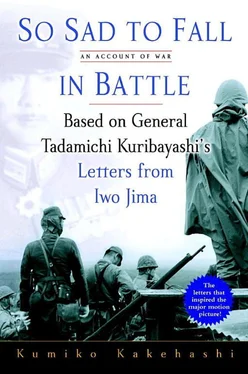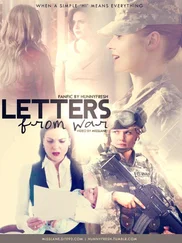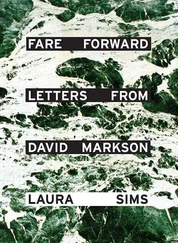Beaches ran along both sides of Chidorigahara. Looking down from Mount Suribachi, the south beach is on the right hand, and the west beach on the left. As the coastline in the northern and eastern parts of the islands had cliffs, reefs, and high surf, the Americans were going to have to land on one of these two beaches. Mount Suribachi, with its unbroken view over the beaches, would clearly be a major strategic point for both the attacking and the defending forces.
The Motoyama plateau in the northeast accounted for most of the island’s area.
This region was rocky, with terraces and hillocks. The ground underfoot was tuff, a stone soft enough to dig with picks and shovels. Tuff could also be used for building blocks, so it looked likely to be helpful for constructing defensive positions.
The geothermal heat that reached up to 140 degrees Fahrenheit and the sulfur vapor that wafted up from within the earth were problems. Building fortifications was definitely not going to be easy, but the only way to hold the island as long as possible was to construct strong defensive positions before the American landing. Kuribayashi started to devise a strategy to repulse the Americans, whom he expected to come ashore with overwhelming firepower.
Kuribayashi also had to think about the needs of the men who had to live packed together on the island. It was his responsibility to maintain the discipline and health of his men as they toiled away, performing maneuvers and building defenses under the harshest conditions. What, then, was Iwo Jima like as a place to live? As he explained to his wife, Yoshii, on August 2, 1944:
There are so many flies that they get into your eyes and your mouth. There are ants everywhere—like the pilgrims all moving en masse to Zenkôji Temple—and they come crawling up all over your body, lots of them at once. There are cockroaches, too—filthy, grotesque insects—all over the place. The only good news is that there aren’t any poisonous insects or snakes.
For food, there were a few wild papayas and bananas, but so many soldiers picked them that there are none left now. As it’s a piping hot volcanic island, vegetables don’t really grow here.
Flies were such an annoyance to the soldiers that almost all the accounts written by survivors mention them. It also seems that there were great numbers of cockroaches, which were still a rarity in Tokyo back then. Kuribayashi, who was fastidious and liked things to be neat and tidy, was obviously affected by the insects, as he mentions them countless times in his letters home.
The soldiers on Iwo Jima, including Kuribayashi, lived either in tents or in damp caves. When the air raids grew heavy, they would spread blankets on the floor of the dugouts and sleep there. There was, however, no way to thwart the attacks of the insects.
When Kuribayashi got to his post, there were over six thousand army and navy personnel on the island. With subsequent reinforcements, the final number swelled to over twenty thousand. The biggest problem they faced was how to get drinking water.
On his first tour of the island, Kuribayashi realized there was not a single stream in the place, nor were there any springs. As the island was made of sand and rock, rainwater would sink into the ground in only an hour or two. The only way to get a steady supply of drinking water was to construct cisterns to store it in. The original inhabitants of the island had relied on rainwater for their needs, but that was only feasible when the population was a little over a thousand people.
Prior to the landing, American intelligence analysts estimated the maximum number of Japanese troops on Iwo Jima at thirteen thousand men. With no drinking water available, they judged that anything more than that was out of the question. But their forecast was off the mark. The Japanese were forced to perform a miracle: sustaining twenty thousand men in an environment that was hopelessly deficient in water.
Kuribayashi was always acutely conscious of this problem, and he sternly prohibited the wasteful use of it.
He was especially strict toward the senior officers, who tended to get preferential treatment. On one of his tours around the island, the sight of a unit commander rubbing himself with a towel soaked in water from a cistern drove him into a rage. He reportedly told the officer that he “deserved to be executed by firing squad,” before giving him an earnest lecture and the warning that “on this island, a drop of water is as precious as a drop of blood.”
Naturally, Kuribayashi led by example and cut down on his own use of water. He explained to Yoshii on August 2, 1944:
Since there are no streams and no wells, we collect all the rainwater, which we then use very sparingly. To wash my face (actually I just wash my eyes), I put the tiniest drop of water into the basin—about as much as we used for Marie’s bowl. After that Fujita uses it to wash, and we carefully keep whatever’s left over and use it for washing our hands in the toilet. That’s the state of things for us—but the men cannot even do that much.
Marie was the name of a German shepherd dog Kuribayashi had been very fond of. The men were amazed that their commander in chief could take care of his daily needs—cooking and drinking aside—with only enough water for a single dog’s bowl.
Kuribayashi always went on foot to inspect the island’s defenses. Since Kuribayashi was originally a cavalryman and a celebrated horseman to boot, some of his officers recommended that he make his rounds on horseback. (There were three horses on Iwo Jima.) Kuribayashi never once rode, on the grounds that riding a horse would only make it thirsty.
Many of the soldiers recall Kuribayashi turning up at the different units unarmed, with a cane, and wearing jikatabi (rubber-soled, split-toed shoes). He always had a canteen hanging off his shoulder. At the time, the water ration was one canteen per person per day. Kuribayashi followed the same rule himself. Some units used their precious water ration to boil tea in honor of the commander in chief’s visit, but Kuribayashi would never accept it.
WATER WAS NOT the only aspect of life where he forbade any difference in the treatment of the upper and lower ranks. On June 25, he sent out a bulletin called “Important Points from the Division Chief” to all the officers and men. It included the clause: “Officers must pay attention to what the soldiers eat. It is forbidden to prepare food for the officers separately or to be indifferent to the provision of meals for the soldiers.”
In short, Kuribayashi was saying that the officers must eat the same as their men.
The entirely rational thought that officers needed to have a proper grasp of the nutritional condition of the men under their command probably lay behind this policy that officers and men should share the same hardships regardless of rank.
Having once decided that he would eat only what his men ate, Kuribayashi followed through. When liaison officers came over from the mainland or from Chichi Jima, he would sometimes open tinned food and drink a little whiskey, but on normal days he gave orders that he be brought the same food as the ordinary soldiers.
This irregularity greatly perplexed his orderlies. When it came to the division commander, they believed that everything, even down to the number of plates, had to be different. Despite being ordered to bring Kuribayashi the same thing the soldiers were getting, the orderlies were baffled and didn’t know what to do. Kuribayashi smiled at them. “All right, then,” he said, “just lay out the plates as usual,” and he ate his simple fare with an array of empty plates spread before him.
The navy had access to transport, so navy personnel were relatively well supplied. The army, by contrast, had poor-quality provisions and not enough of them. It was not just a matter of water; fresh vegetables were also in short supply, and they had to eat dried vegetables instead—Kuribayashi, of course, included.
Читать дальше












